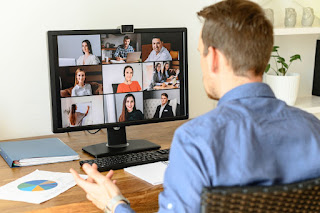Go big in digital or risk being left behind. The government took full cognisance of this, which saw it roll out the Malaysia Digital Economy Blueprint or MyDigital recently.
It dove deep into the national digitalisation journey since 1996 when the Multimedia Super Corridor (MSC) was initiated and picked up on several weaknesses to address before it went back to the drawing board.
The Covid-19 pandemic and its wrath further cemented the need for digitalisation efforts, not only for the economy to rebound post-pandemic but even more so to future proof the nation from any sort of further crisis.
Minister in the Prime Minister’s Department Datuk Seri Mustapa Mohamed (pic below) said the pandemic has laid bare the weaknesses and the gap in the economic structure that has to be addressed immediately.

“Covid-19 affected the B40 more than the T20 and M40. We saw the impact from the MCO on micro, small and medium enterprises (MSMEs).
“The reality is, most of the traditional or brick and mortar business owners have to shut down because they were unable to generate any revenue for months but they still had to pay their workers and for rental. Most of them have low digital literacy and it is not easy for them to move into the digital economy quickly, ” he said in a 10-point question and answer on MyDigital.
Mustapa added that there was no other choice than to accept and adopt digital technology, where the agenda is to improve the quality of life of the people, to improve business productivity and to stimulate the country’s economic growth.
He said Malaysia is one of the countries with the highest Internet usage, far higher than Thailand and Singapore.
“During the pandemic, Internet data usage rose by approximately 30%. The government sees an importance in this in empowering the business community. Business sectors are expected to grow rapidly in line with global competition and this will give our local businesses opportunities to penetrate the global market to become even more competitive through digitalisation, ” he said.
From a macro perspective, the digital economy is expected to contribute 22.6% to the gross domestic product (GDP) by 2025.
MyDigital is also targeted to produce some 500,000 jobs in the digital economy and ensure that some 875,000 MSMEs adopt e-commerce.
For the people, the target is to achieve 100% of households with Internet access and for all students to have access to online learning.
Mustapa stressed on the importance of the blueprint in bridging the digital divide among Malaysians, between the urban and rural and between the young and old.
“The Covid-19 pandemic has raised our awareness that the adoption of digital technology needs to be expedited to protect our people from the risks of the digital economy. We are expected to see a change in the digital economic landscape towards improved digital literacy, creation of high-income jobs, a simpler and better organised banking and financial management, access to better education virtually, and the mobilisation of medical facilities to remote towns, ” he said.
For instance, Mustapa said one no longer needs to rent a shop to run a business and can do so entirely online using Facebook, Instagram or WhatsApp.
While digitalisation was not something alien to Malaysia, the minister noted that the digital foundation has to be further strengthened in a more aggressive and integrated manner.
There are three phases to the Malaysia Digital Economy Blueprint – the first phase from 2021 to 2022 on accelerating adoption to strengthen the digital foundation, the second phase from 2023 to 2025 to drive digital transformation and inclusion, and the final phase from 2026 to 2030 to become the digital product manufacturer and digital services provider for markets in the region.
“The first phase places a holistic emphasis on data and digital intelligence as the lifeblood of empowering the digital economy in Malaysia.
“In the second phase, the government will look towards an inclusive digitalisation strategy where government efforts will be focused towards digitalisation engagement on a larger scale.
“This will also see the private sector empowered with human capital to encourage innovation in business areas such as the gig economy sector whereas phase three will chart the path for strong and sustainable growth in the coming decades, ” Mustapa said.
The government also hoped that the initiatives under MyDigital will serve as a catalyst for 5,000 new start-ups in the next five years and to attract unicorn companies to operate in Malaysia due to its tremendous spillover effect. A unicorn is a privately-owned start-up valued at over US$1bil (RM4.06bil).
When the unicorns perform well, Mustapa said this will contribute to the country’s cash flow and will also become the starting point to attract new foreign and domestic investments of some RM70bil into the digital sector.
“Old or young, urban or rural, or what your level of education or career is, the blueprint is for all of us. There’s something in it for everyone. I urge all Malaysians to grab the available opportunities and make the most of it. Together, we will be able to improve the standard of living of every Malaysian, ” he said.
Related posts
Jack Ma advisor to Malaysian Govt on digital economy to start with e-FTZ
The ugly side of the digital economy










